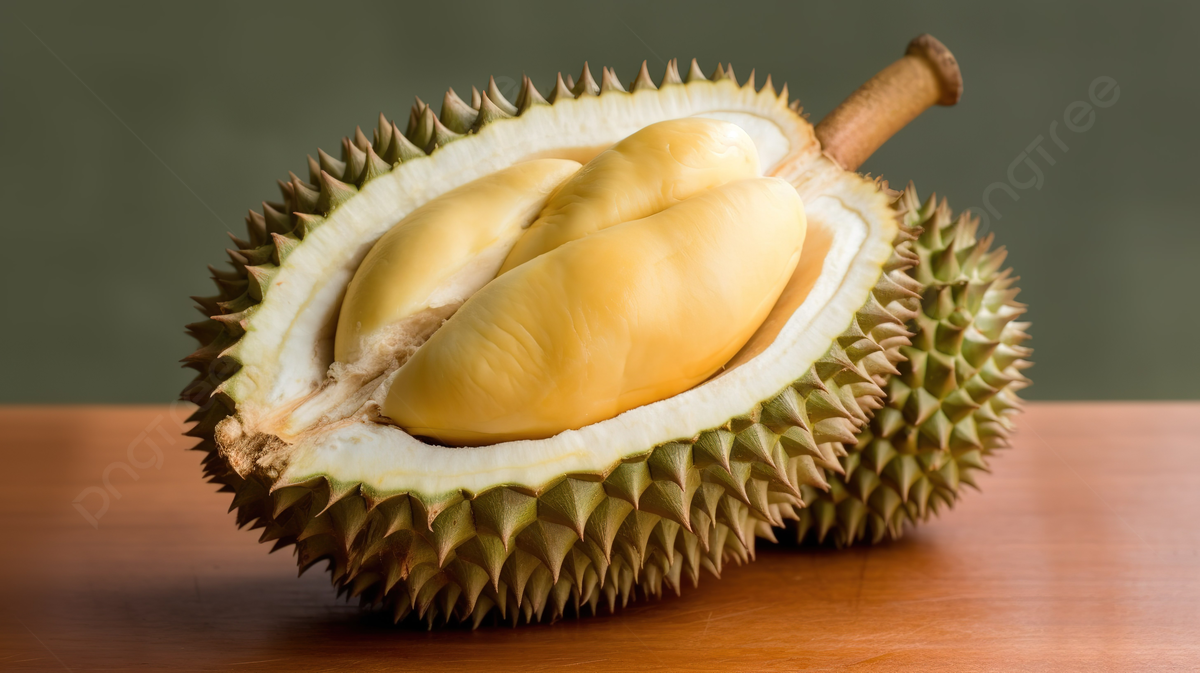The durian, once considered merely a regional delicacy with its notoriously pungent aroma, has transformed into a global agricultural powerhouse worth billions of dollars.
Market Value and Global Demand of Durian
The global market has witnessed remarkable expansion, with the market valued at $20.7 billion in 2025 and projected to reach $41.9 billion by 2035, representing a robust compound annual growth rate (CAGR) of 7.3%. This extraordinary growth trajectory reflects not just increasing consumption but also the fruit’s evolution from a niche Southeast Asian specialty to a globally recognized luxury commodity.
China has emerged as the driving force behind this phenomenal growth, accounting for 91% of global demand and importing $6.99 billion worth of durians in 2024 alone—a 4.1% increase from the previous year. The Chinese market’s appetite appears insatiable, with imports totaling 1.56 million metric tons in 2024, representing a 9.4% year-on-year increase. This dominance has earned China the title of the world consumption capital, where the fruit has transcended its traditional role to become a symbol of luxury and culinary sophistication.
The market expansion extends beyond raw consumption. The global trade value of fresh durians exceeded $7.2 billion in imports in 2023, demonstrating the fruit’s significant contribution to international agricultural commerce. This figure represents substantial growth from the $4.61 billion recorded in the previous year, highlighting the accelerating momentum of the trade.wtocenter
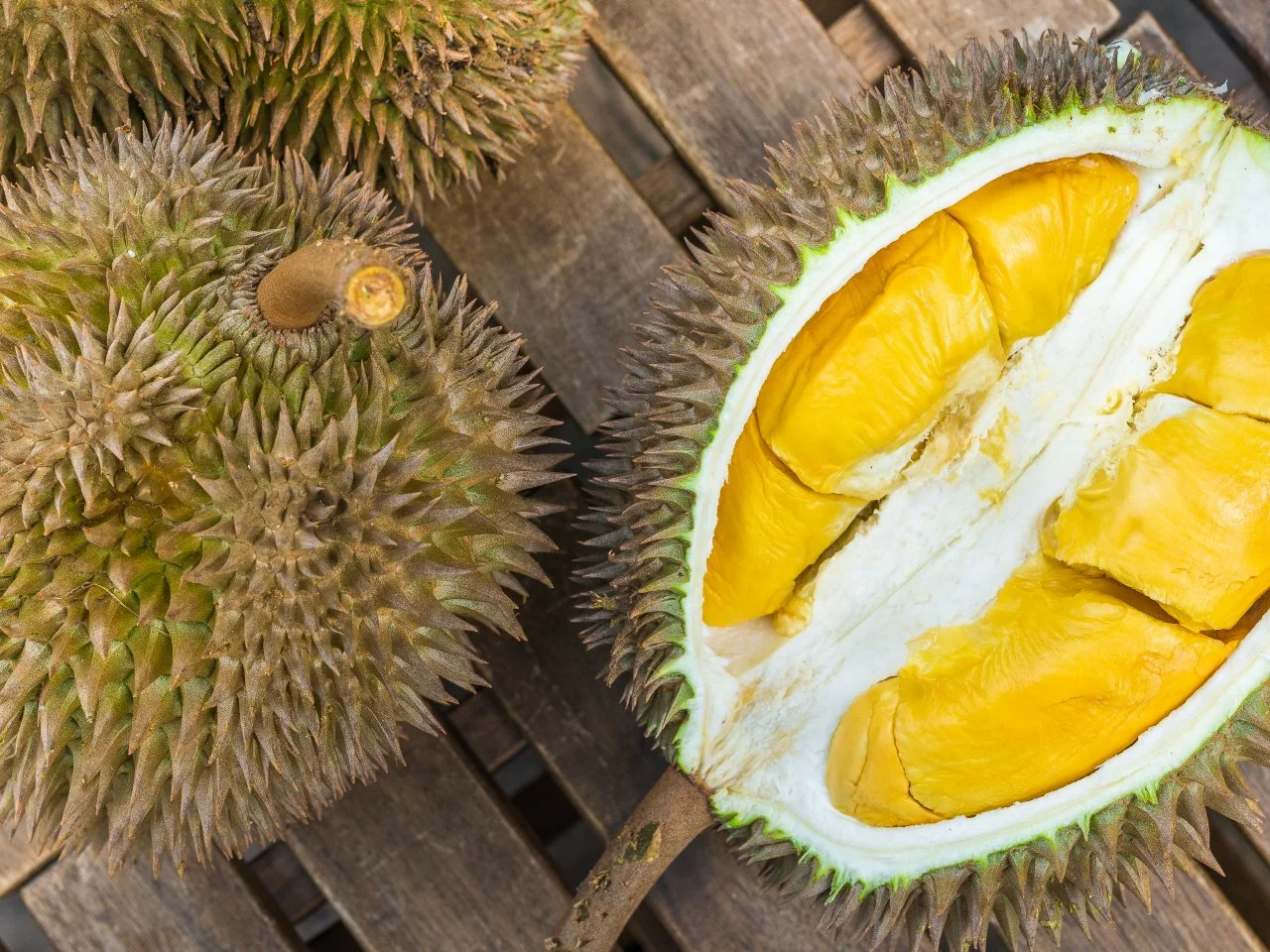
Durian Regional Production and Export Dynamics
Southeast Asia remains the epicenter of production, with Thailand historically dominating exports at 94% of world shipments over 2020-2022. However, the competitive landscape is rapidly evolving. Vietnam has emerged as a formidable competitor, achieving $3.3 billion in exports in 2024—a staggering 7.8-fold increase compared to 2022. This success story demonstrates Vietnam’s strategic positioning in capturing Chinese market share, with the country now commanding 47% of China’s imports, closely trailing Thailand’s 52.03% market share.iprcc+2
Malaysia, despite being the birthplace of premium varieties like Musang King, holds a smaller but growing market position. Malaysian exports reached $44.49 million in 2023-24 with over 27,000 metric tons exported. The country aims to achieve over $350 million in exports in 2025, leveraging its reputation for producing the world’s most prized durian varieties.
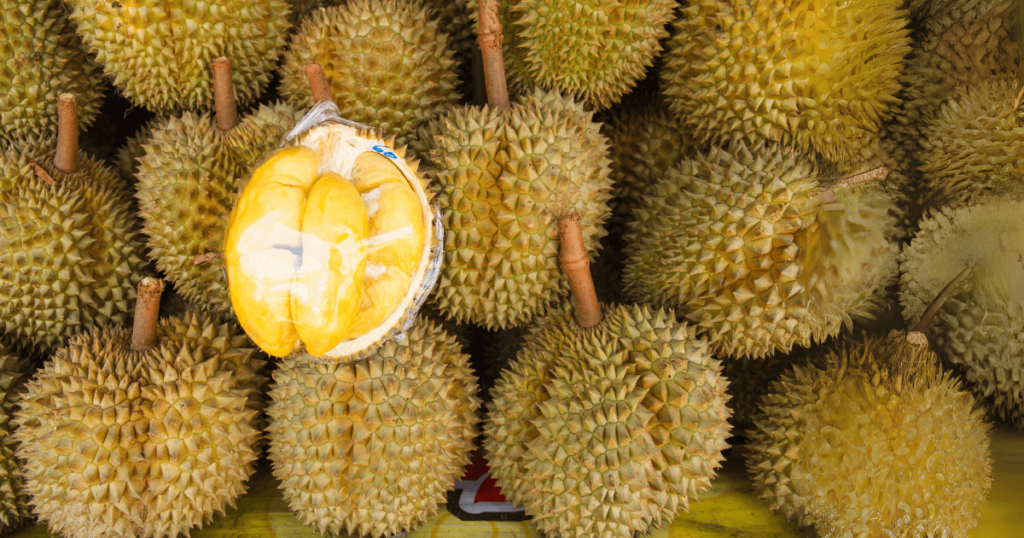
Indonesia, with vast potential for cultivation, remains largely untapped in international markets. The country’s exports reached only $1.07 million in 2023, significantly below its Southeast Asian neighbors. However, with durian demand in China potentially reaching $8 billion, Indonesia is actively pursuing direct export arrangements with China to capitalize on this massive opportunity.
The Health Revolution: Durian as a Superfruit
Beyond its distinctive taste has gained recognition as a nutritional powerhouse, contributing to its premium positioning in global markets. Per 100 grams, durian provides 147-165 calories, rich vitamin content including vitamins C, B6, and folate, and essential minerals such as potassium, magnesium, and iron. This nutritional profile has positioned durian as a “superfruit” in health-conscious markets.
The antioxidant properties of durian, including flavonoids, carotenoids, and polyphenols, provide significant health benefits including anti-aging effects, heart health support, and potential cancer prevention. Research indicates that consumption may help reduce anemia, strengthen bones, improve digestive function, and provide natural energy enhancement.
Particularly noteworthy is durian’s high fiber content (3.8 grams per 100 grams) and potassium levels (436 mg per 100 grams), which support digestive health and cardiovascular function. The fruit’s natural tryptophan content acts as a sleep promoter and mood enhancer, adding to its appeal as a functional food.
Varietal Diversity and Premium Positioning of Durian
The durian market’s sophistication is reflected in the diversity of cultivated varieties, each commanding different price points based on quality, origin, and characteristics. Musang King remains the crown jewel of durian varieties, originating from Malaysia and prized for its creamy golden flesh, complex bittersweet flavor profile, and distinctive star-shaped bottom pattern. This variety commands premium prices due to its small, flat seeds, rich oil content, and perfect balance of sweet and bitter flavors.
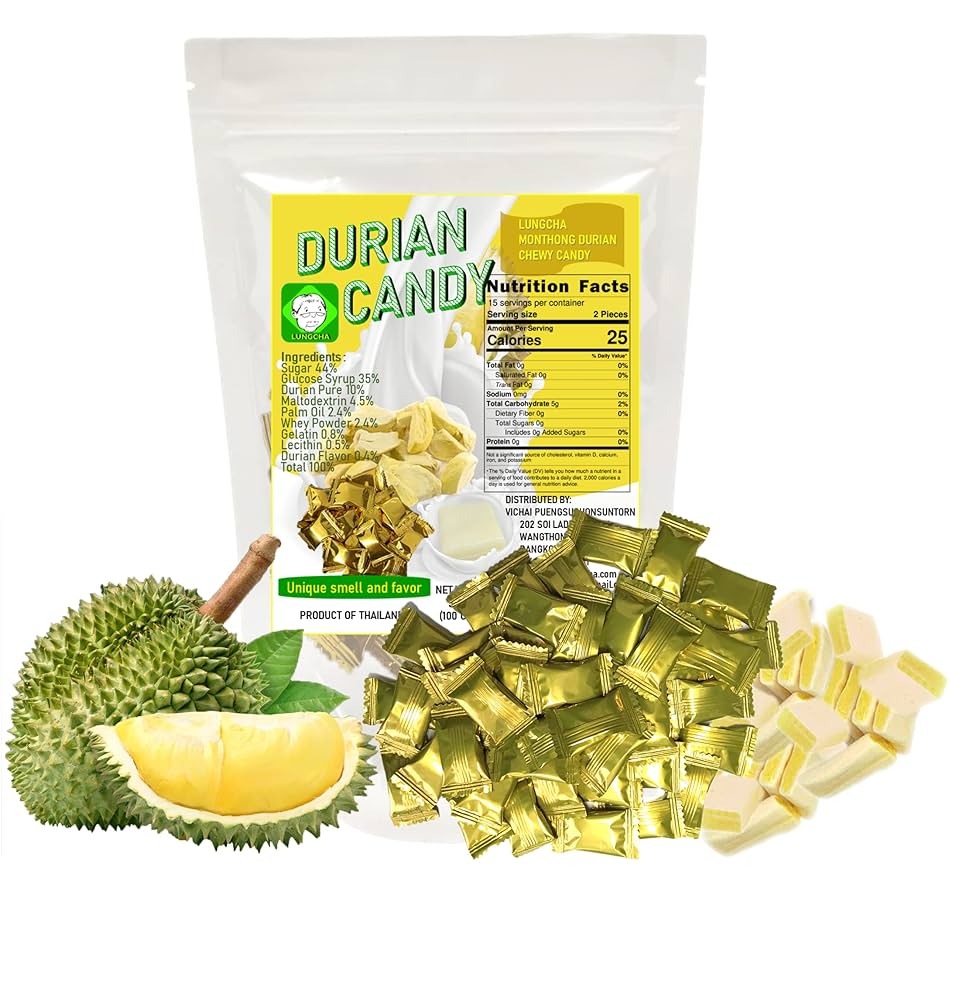
Thai Monthong, meaning “golden pillow,” represents 41% of all cultivated durian areas in Thailand. This variety produces large fruits weighing 2-6 kg with thick, creamy, pale yellow flesh and mild odor, making it ideal for processing and export. Its consistent quality and processing adaptability have made it a commercial favorite in international markets.
Vietnam’s Ri6 variety has gained significant traction, featuring distinctive bright yellow color similar to Musang King intensity. Vietnamese farmers have perfected cultivation techniques through careful soil preparation, optimal irrigation systems, and strategic variety selection, enabling year-round production to meet international demand.
Processing Innovation and Value-Added Products
The industry has evolved beyond fresh fruit sales to encompass a diverse range of processed products. Frozen durian pulp and paste represented the most lucrative product segment, generating $13.12 billion in revenue in 2018. This processing capability has extended the fruit’s shelf life and enabled global distribution, opening new market opportunities beyond traditional consumption regions.
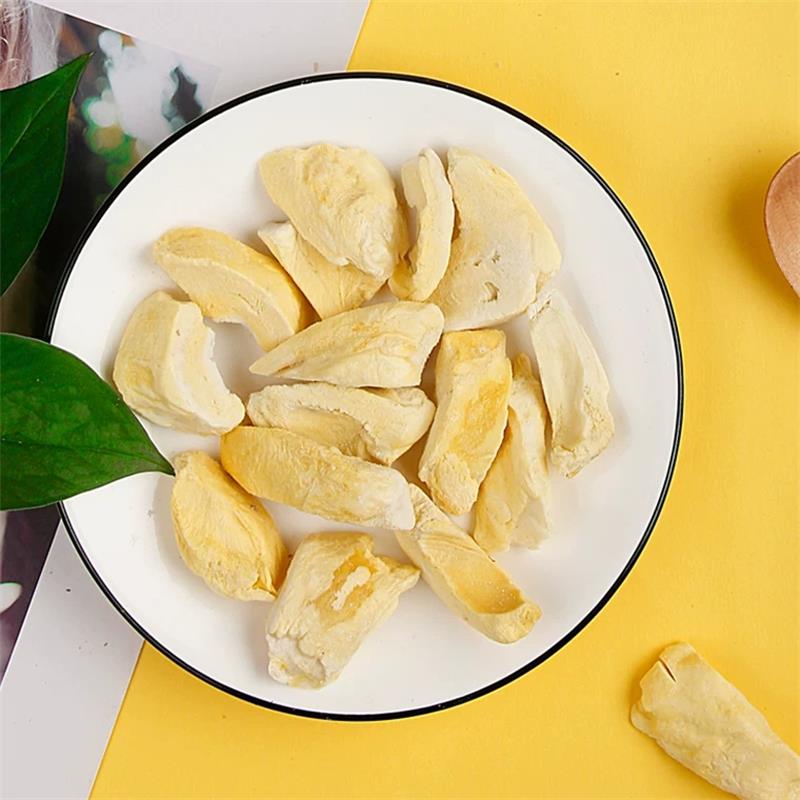
Innovation in durian-based products has accelerated, particularly in China where themed restaurants, hot pot chains, durian-filled bread, and specialized buffets have gained massive popularity. A durian chicken hot pot chain in Guangdong Province sold over 2.22 million servings, while Shenzhen durian buffets offer over 200 durian-infused dishes. These culinary innovations have transformed from a simple fruit into a comprehensive culinary ingredient, expanding its market potential exponentially.

Cultivation Technology and Sustainable Development
Modern durian cultivation has embraced advanced agricultural technologies to meet growing global demand. Vietnamese farmers employ automated irrigation systems, precision fertilization, and AI-driven monitoring to optimize growing conditions. Grafting techniques and selective breeding programs have improved yield consistency and fruit quality, while integrated pest management systems reduce chemical inputs and environmental impact.
Good Agricultural Practices (GAP) certification has become increasingly important for international market access. Thai durian growers implementing GAP standards have achieved significant reductions in chemical fertilizer and pesticide use while maintaining quality standards required for export markets. These sustainable practices not only improve environmental outcomes but also enhance product traceability and consumer confidence.
The development of odorless durian varieties, such as Thailand’s Chantaburi No. 1 and No. 3, represents significant innovation in expanding market acceptance. Chantaburi No. 3 develops odor only three days after picking, enabling odorless transportation while satisfying consumers who prefer traditional durian characteristics.youtube
Economic Impact and Rural Development of Durian
The durian boom has generated substantial economic benefits across Southeast Asia, particularly for rural farming communities. Vietnam’s durian exports now account for nearly 50% of the country’s total fruit and vegetable export revenue, demonstrating the crop’s transformative economic impact. Thai durian exports to China surged from $128 million in 2012 to $3.75 billion in recent years, representing a nearly 30-fold increase.
This economic transformation extends to smallholder farmers who comprise the majority of durian producers. Malaysia’s durian industry supports thousands of rural families, with premium varieties like Musang King commanding prices up to $50 per kilogram in international markets. The high-value nature of durian cultivation has enabled farmers to achieve significant income improvements compared to traditional crops.
Future Outlook and Market Challenges
Despite remarkable growth, the durian industry faces several challenges that could impact future development. Regulatory barriers concerning food safety and quality standards present ongoing challenges for exporters. China’s recent tightening of inspection procedures for chemical residues, particularly Basic Yellow 2 (BY2) detection, has created export difficulties for major suppliers.
Climate change and extreme weather events pose significant risks to production stability. Thailand’s extreme heat conditions have affected fruit quality and yields, contributing to market share losses to competitors like Vietnam. Infrastructure limitations and cold chain requirements continue to challenge efficient distribution, particularly for reaching distant international markets.

Market concentration risks are evident in the industry’s heavy dependence on Chinese demand. While this concentration has driven extraordinary growth, diversification into other markets remains crucial for long-term sustainability. Emerging markets in Europe, North America, and the Middle East present opportunities for expansion, though they require different marketing approaches and product adaptations.
Conclusion: The Sweet Future of the Durian Dynasty
As the market continues its projected growth toward $41.9 billion by 2035, the industry’s success will depend on balancing increased production capacity with sustainable agricultural practices, maintaining quality standards while expanding market reach, and navigating regulatory challenges while preserving the fruit’s premium positioning.
About us
Try it for yourself. Freshdi.com
Global Agri B2B Marketplace.

